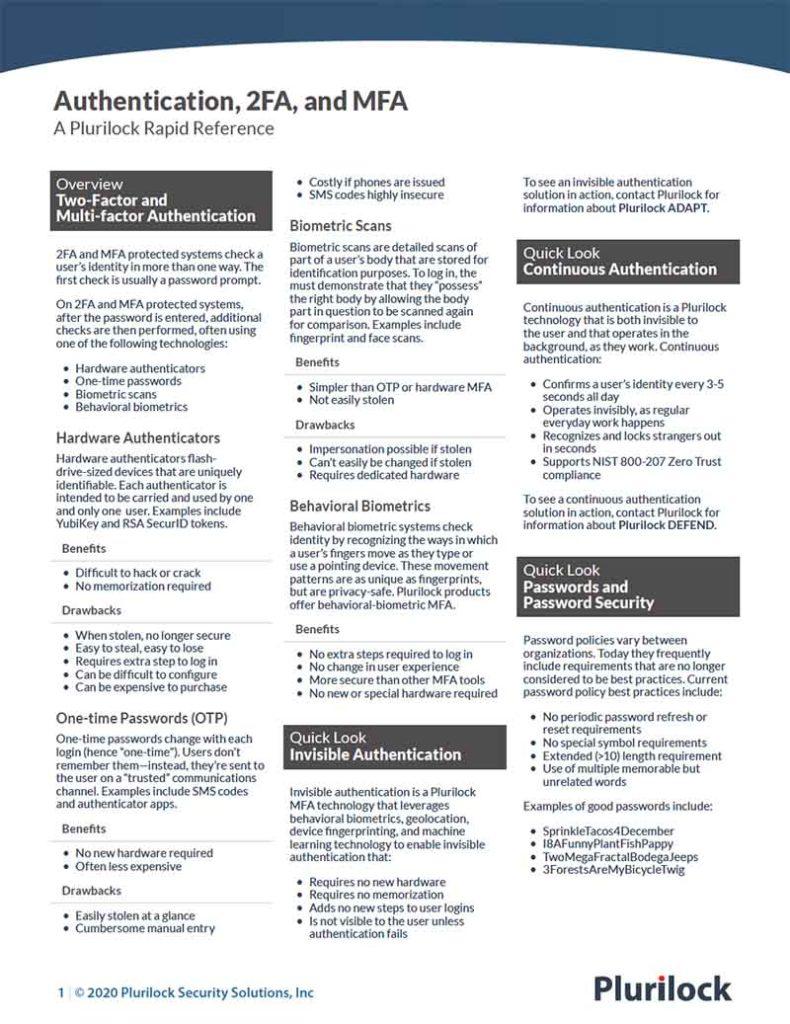Cybersecurity Reference > Glossary
How are Plurilock ADAPT™ and Plurilock DEFEND™ different from one another?
Plurilock ADAPT provides multi-factor authentication for login or credential workflows, while Plurilock DEFEND provides continuous authentication for endpoints and workstations.
Plurilock ADAPT is deployed in JavaScript- or ADFS-based workflows in which a username and password are requested. As the user provides these credentials, ADAPT silently analyzes behavioral, contextual, and environmental signals to provide a decision about whether the user providing the credentials is actually their rightful owner. This decision is used as an additional identity factor to determine the result of the login attempt, and is as strong as, yet far more invisible than, one-time codes delivered via SMS or token hardware.
Plurilock DEFEND is deployed as a low-level, lightweight software agent on Windows and Mac OS systems. Plurilock DEFEND monitors all keyboard and pointer activity on the workstation or endpoint, using behavioral biometrics to verify identity of the logged-in user every 3-5 seconds. The outcomes of these regular checks can be used to lock the workstation when a user’s identity can no longer be confirmed or to provide detailed identity input to SIEM systems or other security frameworks for further action.

2FA/MFA Rapid Reference
Authentication at a glance
Download the 2FA/MFA Rapid Reference now:
- 2FA and MFA basics and common solutions
- The benefits and drawbacks of each
- Glossary of authentication terms
2FA/MFA Rapid Reference
- 2FA and MFA basics and common solutions
- The benefits and drawbacks of each
- Glossary of authentication terms













